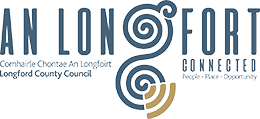Coolamber Hall House
Coolamber Hall House is an Anglo-Norman ruin dating from the early 13th century and located in Lisryan, approximately 12km from Edgeworthstown, County Longford. The ruin is on private property and is therefore inaccessible to the public, however it is located next to a roadway, where it is highly visible.
History of Coolamber Hall House
An Anglo-Norman ruin dating from the 13th century, Coolamber Hall House is a two-story structure with a long, rectangular plan and a large first-floor hall. A doorway in the north-east corner gives access to the tower. This would have been via an external wooden or stone staircase.
The building also has a four-storey service tower to the south-east corner. Interestingly, a late-medieval church is situated to the north-west of Coolamber Hall House. This indicates the power and prestige that the owners would have derived from their association with the church during the Middle Ages. The structure is located on a semi-circular platform, which was once enclosed by a stone wall.
The hall house has the remains of a barrel vault at its northern end on the ground floor. The south end is grass-covered and may conceal two other barrel-vaults. A relieving arch located directly above the barrel vault in the hall suggests that the service tower may be a later addition.
Some architectural features which date from the 16th century remain, including fireplaces and ogee-arched windows.
Historically, the site of the house was strategically important as it was at the boundary of the English Pale, the area under full control of the English Crown, in the 17th century.
Coolamber Hall House was the possible residence of Thomas Nugent, one of the commissioners for the Plantation of Longford in 1620 under King James I.
Coolamber Hall House was besieged by Oliver Cromwell during his invasion of Ireland after 1649.



